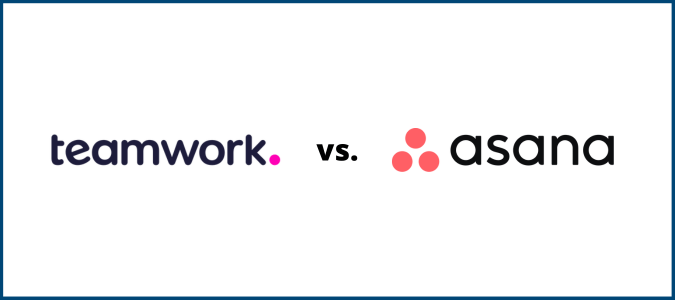Xebrio lets your team do more than track project work; it helps you manage the requirements to keep in mind before you even start. Launch projects and monitor them through completion in what Xebrio calls “requirements to release” management. Tech, IT, and marketing teams can benefit from a sophisticated requirements management tool. But is Xebrio the right choice for you? Let’s explore its virtues and shortcomings to help you find out.

Xebrio Compared to the Best Requirements Management Tools
Xebrio is an impressive tool in many ways, but it has a pretty narrow focus. That’s why we’re sharing three great alternatives—our Golden Eggs—from our list of the top requirements management software.
Confluence offers collaborative tools, an intuitive layout, and over 75 templates to help your team get started quickly. Try Confluence out on a seven-day free trial.
Monday.com is one of our favorite tools for projects in general, including requirements management, because it’s so customizable yet still so user-friendly. Test it out for yourself with a 14-day trial—no credit card required.
ClickUp can be as simple or complex as you need it to be, and the company offers an abundance of training tools to get your team started on the right foot. Try it out on ClickUp’s Free Forever plan and upgrade as needed.
Xebrio: The Good and the Bad
We spent hours researching Xebrio’s tools and studying user reviews to learn what it can do and what real people think of the platform. Let’s get to the heart of what we love—and don’t—about this requirements management tool.
What Xebrio Is Good At
Xebrio’s laser focus on requirements management makes it excel at connecting various requirements across projects, from quality assurance and bug reporting to standard operating procedures and other organizational documentation. Connectivity and transparency are the two main virtues of this software.
Requirements tracking: Xebrio is a platform ultra-focused on requirements management. Because of that, you can tap into its great features to help you track and adhere to them, like requirement templates, customizable approval workflows, enhancement requests, and task dependencies. Users say that Xebrio is ideal for tech, software, and IT teams, which is particularly true if you spring for Xebrio’s mid-tier package, which also includes a suite of bug-tracking and testing tools.
Traceability and versioning: A big part of quality requirements tracking is versioning and traceability. Xebrio keeps track of every change you and your team members make, whether it’s document revisions or updated project requirements. You’ll be able to refer to past versions whenever you need to.
Xebrio also gives you a way to visualize what effective execution looks like with its ability to trace how each requirement comes into play in any project. If you use Xebrio’s mid-tier pricing plan, you’ll also be able to visualize all the tests linked to each requirement. Every pass, fail, or defect will automatically be traced for you.
Dev tool integrations: Xebrio’s two software integrations reflect the platform’s primary suitability for software developers. Connecting it to either GitHub or Jira Software can make Xebrio even more effective for your devs.
With the GitHub integration, teams can link GitHub pull requests with Xebrio’s testing and tracking features. You can also put all your software development data from GitHub into a central Xebrio dashboard. The Jira Software integration allows Xebrio users to link Jira Software issues to Xebrio project requirements.
Value: If you’re a software developer or IT manager, you’ll appreciate the scant $5 a month a single user pays for Xebrio’s base Requirements Management plan. Even the next tier up, which includes requirements testing, document collaboration, and more, only costs $10 a month per user.
Asset management: Project assets are a crucial part of achieving the end goal of any project. Clients usually don’t hand these to you in a neat and tidy package, though. Instead, you’ll get an email here, a PDF there, and a video or audio clip sent by text at midnight for good measure. Then, when you’re getting down to work, you’ll need to spend time digging through emails, sifting through attachments, and checking your trash folder for PDFs or images you’ve tossed.
With Xebrio, that pain is gone. Gather every asset within the platform as you receive them, and let Xebrio store and organize them for you. Then, you can share key assets with the right members of your team and search for files when you need them on demand.
What Xebrio Is Lacking
There’s an incomplete feel to Xebrio compared to some other requirements management platforms because of its narrower focus on dev teams. It’s like when you walk into a shiny new house and go downstairs to check out the basement to find an unfinished concrete cellar. So let’s talk about the areas in which Xebrio doesn’t quite measure up to its competitors.
Usefulness beyond IT and development: Xebrio’s narrow focus on software and IT requirements management is beneficial for users in those industries. But we’d love to see the company expand its offerings to apply to other industries or departments that could benefit from requirements management software, such as marketing, healthcare, and manufacturing. Each of those examples has deep needs and pain points when handling work requirements, and Xebrio’s other features could really prove useful if there were a little more support for those categories.
Wider variety of integrations: Even though we love Xebrio’s Jira Software and GitHub integrations, we wish there were more to choose from than just those two. For example, Xebrio is unable to sync with team communication platforms, CRMs, or scheduling software, which could solve the first flaw we mentioned: a lack of utility in fields outside of IT and software development.
In the few reviews available for Xebrio, users specifically complained about the lack of a team communications integration. That’s something that everyone, including dev teams, could really take advantage of, making it easier to collaborate and work on assets, tasks, or sprints together.
Website functionality: As we explored the Xebrio website, we bumped into more than one 404 page. This seems like a quick fix for the company and an important one. While that may not mean much about the software in and of itself, it’s sloppy to the point of concern. One of these error pages appeared after we clicked on a resource menu button for the requirements management guide, which strikes us as not boding well for the user experience of using this cloud-based platform.
Xebrio Options and Pricing
Xebrio offers requirements management, test coverage, and document collaboration for software and IT teams. You’ll see two main packages plus a custom-priced Enterprise plan for on-premise deployments. You can also take advantage of their special offer aimed at startups—teams of 10 or fewer can use one or all of Xebrio’s products for a flat fee of $10 a month instead of $10 per user per month. Let’s dive into Xebrio’s two main plan options.
Xebrio Requirements Management
Requirements management is what Xebrio is all about, and they make their base plan affordable and focused on these core features. You’ll get a user dashboard and project dashboard along with a suite of tools geared toward requirements and specifications.
For example, you can set a requirement as a parent project and then add child specification pages to keep track of a single requirement. This helps you stay on top of a requirement’s many moving parts. You can also upload attachments, set permissions, define tasks, and track the time you’ve worked on that specific requirement.

Xebrio Requirements Management costs $5 per month per user, which goes down to $4 per user per month if you pay for a year upfront. You won’t be paying for bells and whistles you don’t need, but you won’t be able to do much else besides requirements management. You can also test drive this plan for free for 14 days.
Xebrio Requirements Management & Test Coverage
When you work in software development or IT, you must continually test requirements and specifications. That’s where Xebrio’s other plan comes in, which weaves in features tailored to those needs alongside its core requirements management platform.
You’ll get to create test plans, cases, suites, and sessions, while the software release management tool will help you keep track of every update you make to an app or software product.

When you buy Xebrio’s Requirements Management & Testing Coverage plan, you’ll also get document collaboration tools to share, organize, and track your team’s documents and project assets.
This plan costs $10 per month per user, lowered to $8 per user per month if you pay annually. Like the base plan, you can also try this package out free of charge for two weeks.
Xebrio in Summary
Xebrio is a helpful requirements management tool for developers and IT managers. However, it runs into limitations for other departments or industries that may want to use it.
If you’re looking for an option that isn’t so laser-focused on requirements management within software development, don’t forget about our Golden Eggs. Monday.com can handle most requirements management demands for any sort of project team. Confluence gives teams requirements tracking and powerful document collaboration tools in a much more flexible platform. And ClickUp is the perfect, simple list-building tool to help you keep track of requirements the old-fashioned way—but smarter.
Want to know more about these and other alternatives, and this software category as a whole? Learn more by reading our full post reviewing the top requirements management software available today.















